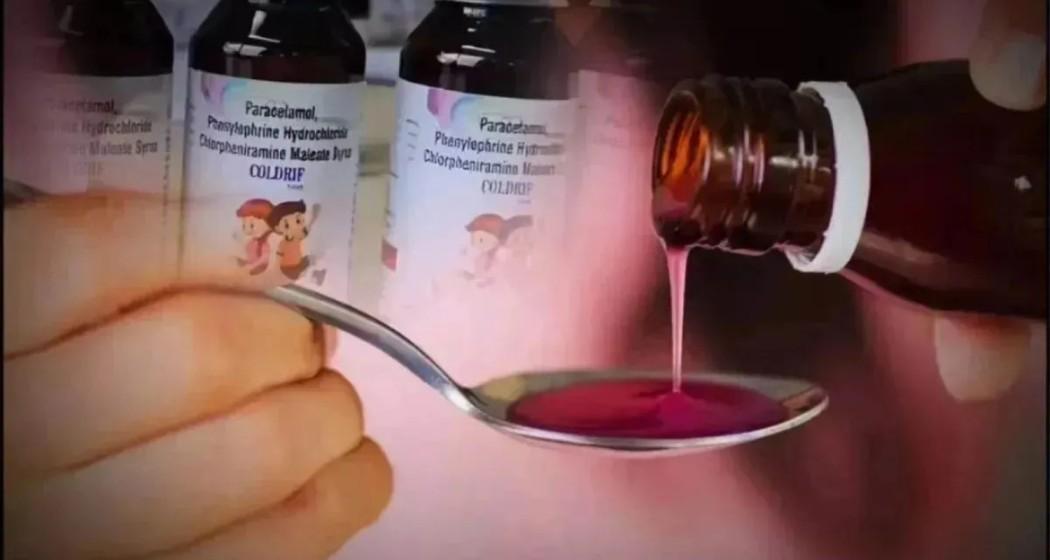Trending:
Time to overhaul drug regulation
The recent death of 14 children in Madhya Pradesh and Rajasthan due to contaminated cough syrups is a national tragedy. It’s heartbreaking that the deaths were linked to a generic cough syrup containing dangerous levels of an industrial chemical.News Arena Network - Chandigarh - UPDATED: October 28, 2025, 07:03 PM - 2 min read

It is ironic that in a country that has earned the distinction of being the pharma capital of the world, the drugs meant to save lives end up taking them. The recent death of 14 children in Madhya Pradesh and Rajasthan due to contaminated cough syrups is a national tragedy. It’s heartbreaking that the deaths were linked to a generic cough syrup containing dangerous levels of an industrial chemical.
The tragedy must serve as a wake-up call for the authorities to overhaul the drug regulation and manufacturing oversight. The deaths came as yet another stark reminder of how lapses in drug quality can turn routine treatment into a fatal risk. All the children died due to renal failure after they consumed the ‘Coldrif’ cough syrup, manufactured by a Tamil Nadu-based pharma company.
A lab test revealed that it contained 48.6% diethylene glycol, an industrial chemical used in anti-freeze and brake fluids. It is highly toxic and is known to cause acute kidney failure, which can prove fatal.
The deaths could have been prevented with a proper regulatory mechanism and maintenance of quality standards. And this is not the first such tragedy. In 2020, a cough syrup, contaminated with diethylene glycol, claimed the lives of 12 children in Jammu’s Udhampur district. The families are still waiting for justice.
Inadequate oversight
Although the Drugs and Cosmetics Act has been foundational in establishing legal standards for safety and efficacy, it is increasingly viewed as outdated. A key structural weakness lies in the division of responsibilities—while the Centre handles approvals and licensing, enforcement and quality monitoring largely rests with the states, many of which lack adequate infrastructure, trained staff or laboratories.
This results in uneven compliance and enforcement. Though the Union government has been insisting on stricter adherence to revised manufacturing practices and periodic inspections, the enforcement remains patchy. The sState regulators lack manpower, and penalties are rarely effective.
Weak deterrence and enforcement are other areas of concern. Though the Act provides for penalties, including imprisonment for manufacturing spurious or substandard drugs, in practice, many cases result in minor sanctions such as temporary licence suspensions, modest fines or delayed prosecution.
In sharp contrast, regulators in other countries, such as the US Food and Drug Administration (FDA) and European Medicines Agency (EMA), enforce stricter oversight, transparent approvals, and robust post-market surveillance.
While criminal prosecution is possible under the Drugs and Cosmetics Act, it is often difficult due to cumbersome procedures and the high burden of proof. The Jan Vishwas (Amendment of Provisions) Act, 2023, further decriminalises several offences, replacing imprisonment with fines — thereby reducing deterrence.
The pharmaceutical sector is often viewed more as a business enterprise than a public health responsibility. Manufacturers have illegally used Ethylene Glycol (EG) and Diethylene Glycol (DEG) as substitutes for glycerine or propylene glycol, exploiting their similar physicochemical properties to cut costs.
International reputation
India’s regulatory loopholes risk not only domestic health, but also global trust. Our reputation suffered serious damage when child deaths in Gambia and Uzbekistan in 2022 were linked to cough syrups manufactured and exported by Indian pharmaceutical firms. The twin tragedies had cast a pall over India's pharmaceutical industry, which makes a third of the world's medicines.
India’s pharma success story cannot rest on cheap generics alone; it must be backed by credibility. Stronger audits, criminal liability for negligence and swift justice are essential. Without them, every such tragedy chips away at public trust — the most vital ingredient in any medicine.
India’s drug regulation is governed by the Drugs and Cosmetics Act of 1940, which is outdated and inadequate to deal with the complexities and challenges of the modern pharma market. The Act does not cover many aspects, such as clinical trials, bioequivalence studies, and good manufacturing practices, which are essential for ensuring the quality and safety of drugs.
Moreover, the enforcement of the Act is weak and fragmented, as it involves multiple authorities at the central and state levels, with overlapping jurisdictions and responsibilities.
Revisit pharma regulatory system
For India’s export-oriented pharmaceutical industry, it is the global perception that matters most. There is an urgent need to reassess the drug manufacturing and regulatory environment in India. Such an exercise would be beneficial nationally as well as globally, given the burgeoning export market for Indian medicines and tremendous growth potential. The presence of multiple regulatory authorities under different state governments impacts accountability. It is surely time to revise the Drugs and Cosmetics Act.
India needs to create a robust regulatory structure with a strong enforcement arm so that medicines for both domestic use and export are of high quality. As the pharmaceutical industry looks to expand its business, the key to success is continuous investment in upgrading the manufacturing standards. India must retain its image of supplying high quality and reliable medicines to the world. It is not enough to be a volume leader; India must add value to volume leadership.
As the third-largest drug producer in the world, India’s pharma exports reached $30 billion for 2024-25, registering a 9.4 per cent increase from the previous fiscal. America remains the largest market for India’s pharma products, followed by the UK, Brazil, France, and South Africa. Enabled by their price competitiveness and good quality, Indian drug makers have made a global mark, accounting for 60 per cent of the world's vaccines and 20 per cent of generic medicines.
India may take pride in earning the tag ‘pharmacy of the world’, but along with it comes the responsibility of ensuring the strictest standards for products that can make a difference between life and death.
